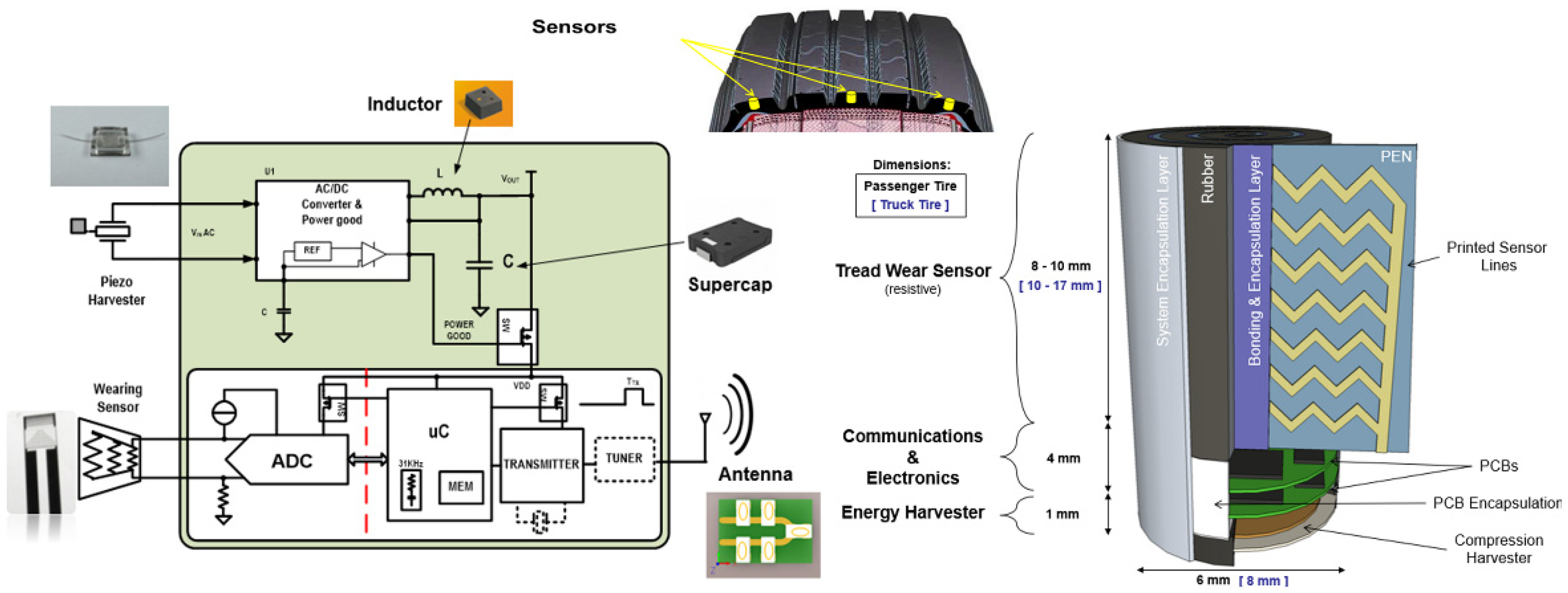Energy-Autonomous Tread Wear Wireless Sensor System for Tire Monitoring †
Abstract
1. Introduction
2. Materials and Methods
3. Results and Discussion
Author Contributions
Funding
Institutional Review Board Statement
Informed Consent Statement
Data Availability Statement
Conflicts of Interest


Disclaimer/Publisher’s Note: The statements, opinions and data contained in all publications are solely those of the individual author(s) and contributor(s) and not of MDPI and/or the editor(s). MDPI and/or the editor(s) disclaim responsibility for any injury to people or property resulting from any ideas, methods, instructions or products referred to in the content. |
© 2024 by the authors. Licensee MDPI, Basel, Switzerland. This article is an open access article distributed under the terms and conditions of the Creative Commons Attribution (CC BY) license (https://creativecommons.org/licenses/by/4.0/).
Share and Cite
Lockhart, R.A.; Janphuang, P.; Molina-Lopez, F.; Quintero, A.V.; Tasselli, G.; Favre, P.; Botteron, C.; Farine, P.-A.; Briand, D. Energy-Autonomous Tread Wear Wireless Sensor System for Tire Monitoring. Proceedings 2024, 97, 86. https://doi.org/10.3390/proceedings2024097086
Lockhart RA, Janphuang P, Molina-Lopez F, Quintero AV, Tasselli G, Favre P, Botteron C, Farine P-A, Briand D. Energy-Autonomous Tread Wear Wireless Sensor System for Tire Monitoring. Proceedings. 2024; 97(1):86. https://doi.org/10.3390/proceedings2024097086
Chicago/Turabian StyleLockhart, Robert A., Pattanaphong Janphuang, Francisco Molina-Lopez, Andres Vasquez Quintero, Gabriele Tasselli, Patrick Favre, Cyril Botteron, Pierre-André Farine, and Danick Briand. 2024. "Energy-Autonomous Tread Wear Wireless Sensor System for Tire Monitoring" Proceedings 97, no. 1: 86. https://doi.org/10.3390/proceedings2024097086
APA StyleLockhart, R. A., Janphuang, P., Molina-Lopez, F., Quintero, A. V., Tasselli, G., Favre, P., Botteron, C., Farine, P.-A., & Briand, D. (2024). Energy-Autonomous Tread Wear Wireless Sensor System for Tire Monitoring. Proceedings, 97(1), 86. https://doi.org/10.3390/proceedings2024097086






